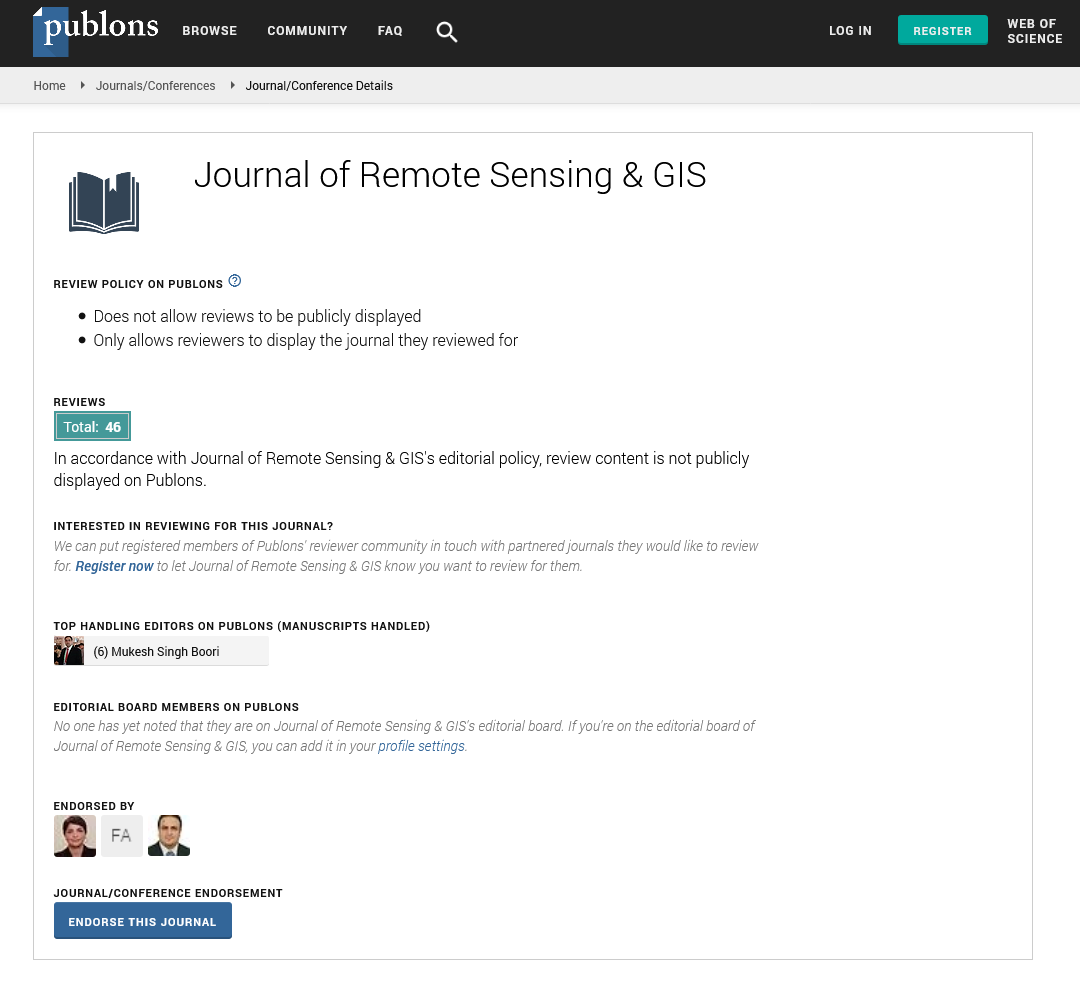Indexed In
- Open J Gate
- RefSeek
- Hamdard University
- EBSCO A-Z
- OCLC- WorldCat
- Publons
- International Scientific Indexing
- Euro Pub
- Google Scholar
Useful Links
Share This Page
Journal Flyer

Open Access Journals
- Agri and Aquaculture
- Biochemistry
- Bioinformatics & Systems Biology
- Business & Management
- Chemistry
- Clinical Sciences
- Engineering
- Food & Nutrition
- General Science
- Genetics & Molecular Biology
- Immunology & Microbiology
- Medical Sciences
- Neuroscience & Psychology
- Nursing & Health Care
- Pharmaceutical Sciences
Abstract
Evaluation of Reservoir Water-Spread Area by Various Image Classification Techniques Using Remote Sensing-A Study on Vaigai Reservoir
This study outlines the estimation of reservoir water spread area of the Vaigai reservoir using remote sensing technique. The multi-purpose reservoirs when conducted periodical capacity surveys helps in determining the rate of sedimentation and reduction in the storage capacity. The conventional methods are hydrographic surveys wherein the water spread area is estimated and is input into the trapezoidal formula to estimate the storage capacity of a reservoir. Such methods are however time consuming, cumbersome and expensive. As an alternative, multi-date satellite remote sensing provides the water-spread area of a reservoir at different water levels in a time and cost effective manner, which can then be input into the trapezoidal formula. Traditional approaches of water spread area estimation from satellite image data include the maximum likelihood, minimum distance to mean, Mahalanobis distance and neutral net which implements per-pixel based methodology and allocate a pixel to a single land cover type. One of the restrictions of these approaches is the pixels present in the peripheral portion of the reservoir contains a mixture of soil, vegetation and water, which are entirely classified as water which results to inaccurate estimates of the waterspread area. In this study, landsat 8-oli and sentinel 2 satellite data of thirteen dates pertaining the years 2017 and 2018 were used and per-pixel classification approach was adopted to extract the water-spread area of the reservoir. The aim of this paper is to examine the per-pixel classification approach on the multispectral data of the reservoir. The water spread area and water levels of the corresponding dates were collected from the Vaigai reservoir authority and were compared with the water spread area of the respective dates derived through per pixel classification.
Published Date: 2024-07-29; Received Date: 2020-02-27

